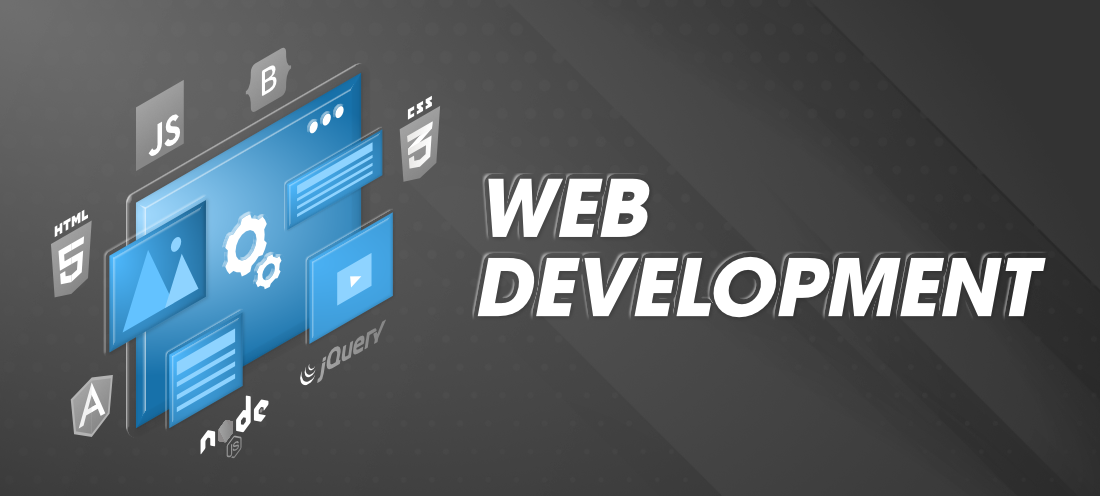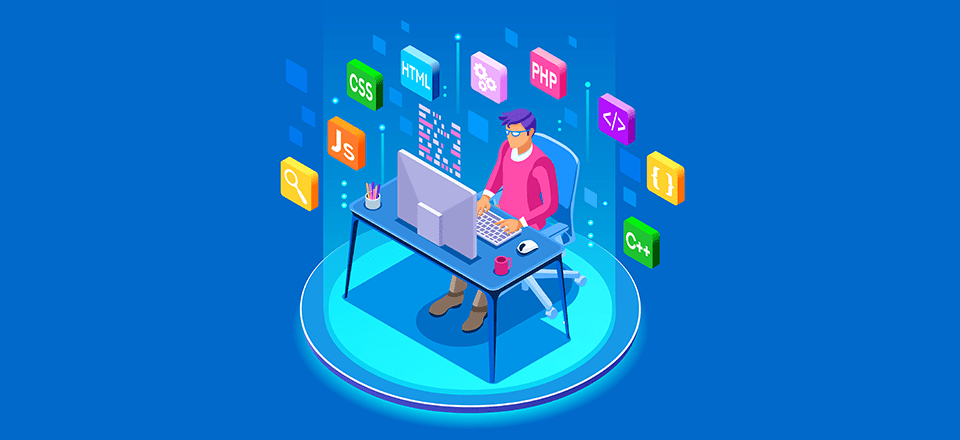All Categories
Featured
Table of Contents
- – Mrw Web Design - Wordpress Websites For Nonpro...
- – Html Responsive Web Design - W3schools Tips a...
- – What Is Web Design, How To Do It Right And Be...
- – 34 Of The Best Website Designs To Inspire You...
- – Mrw Web Design - Wordpress Websites For Nonpr...
- – Web Design Service - Professionally Designed ...
- – Modern Website Designs - Best Web Page Desig...
- – $899 - Custom Mobile Friendly Website Design...
- – Web Design Definition - Techterms Tips and T...
- – Web Design Certificate - Web Development Cer...
- – Web Design Scholarship - Nyc Digital Marketi...
Mrw Web Design - Wordpress Websites For Nonprofits ... Tips and Tricks:
Quick summary Usability and the energy, not the visual design, identify the success or failure of a website. Since the visitor of the page is the only person who clicks the mouse and for that reason decides whatever, user-centric style has actually developed as a standard technique for effective and profit-oriented web style - web design frederick md.
and the energy, not the visual design, determine the success or failure of a site. Given that the visitor of the page is the only individual who clicks the mouse and for that reason decides whatever, user-centric design has ended up being a standard technique for effective and profit-oriented website design. After all, if users can't utilize a function, it might as well not exist.
g. where the search box ought to be put) as it has actually currently been performed in a number of posts; rather we concentrate on the approaches which, used appropriately, can cause more sophisticated design choices and simplify the process of perceiving provided details. Please observe that you may be interested in the usability-related articles we have actually published before: Concepts Of Excellent Site Style And Efficient Web Style Standards, In order to utilize the principles correctly we initially require to comprehend how users communicate with websites, how they think and what are the basic patterns of users' behavior.
Html Responsive Web Design - W3schools Tips and Tricks:
Visitors glimpse at each brand-new page, scan a few of the text, and click on the very first link that catches their interest or slightly resembles the important things they're looking for. There are large parts of the page they do not even look at. A lot of users look for something intriguing (or helpful) and clickable; as quickly as some appealing prospects are discovered, users click.
If a page offers users with high-quality content, they are ready to jeopardize the content with advertisements and the design of the site. This is the reason that not-that-well-designed websites with high-quality content acquire a great deal of traffic over years. Content is more crucial than the style which supports it.

Users don't check out, they scan. Notification how "hot" locations abrupt in the middle of sentences. This is typical for the scanning process. Very basic concept: If a site isn't able to fulfill users' expectations, then designer failed to get his job done correctly and the company loses cash. The higher is the cognitive load and the less user-friendly is the navigation, the more ready are users to leave the website and look for options.
What Is Web Design, How To Do It Right And Best Skills - Rock ... Tips and Tricks:
Neither do they scan website in a linear fashion, going sequentially from one site section to another one. Rather users satisfice; they select the very first sensible alternative. As quickly as they find a link that seems like it might result in the goal, there is an extremely great possibility that it will be immediately clicked.
It doesn't matter to us if we comprehend how things work, as long as we can utilize them. If your audience is going to imitate you're developing signboard, then design excellent billboards." Users wish to be able to control their web browser and rely on the consistent data discussion throughout the site.
If the navigation and site architecture aren't user-friendly, the variety of enigma grows and makes it harder for users to comprehend how the system works and how to receive from point A to point B. A clear structure, moderate visual clues and quickly identifiable links can assist users to discover their path to their objective.
34 Of The Best Website Designs To Inspire You In 2022 Tips and Tricks:
claims to be "beyond channels, beyond products, beyond circulation". What does it imply? Given that users tend to explore sites according to the "F"-pattern, these 3 declarations would be the first aspects users will see on the page once it is packed. Although the style itself is easy and intuitive, to comprehend what the page has to do with the user needs to look for the answer.
As soon as you have actually accomplished this, you can communicate why the system is beneficial and how users can benefit from it. People will not use your website if they can't discover their method around it. 2. Do Not Squander Users' Persistence, In every task when you are going to use your visitors some service or tool, attempt to keep your user requirements minimal.
Novice visitors want to, not filling long web types for an account they may never ever utilize in the future. Let users check out the site and discover your services without requiring them into sharing private data. It's not affordable to force users to get in an email address to evaluate the feature.
Mrw Web Design - Wordpress Websites For Nonprofits ... Tips and Tricks:
Stikkit is a best example for an user-friendly service which requires practically absolutely nothing from the visitor which is inconspicuous and reassuring. And that's what you desire your users to feel on your website. Obviously, Mite requires more. The registration can be done in less than 30 seconds as the kind has horizontal orientation, the user does not even require to scroll the page.
A user registration alone is enough of an obstacle to user navigation to cut down on inbound traffic. 3. Handle To Focus Users' Attention, As sites provide both static and vibrant material, some elements of the user interface draw in attention more than others do. Clearly, images are more attractive than the text simply as the sentences marked as vibrant are more attractive than plain text.
Focusing users' attention to specific areas of the site with a moderate usage of visual elements can assist your visitors to obtain from point A to point B without thinking about how it in fact is supposed to be done. The less enigma visitors have, the they have and the more trust they can establish towards the business the site represents.
Web Design Service - Professionally Designed Websites Tips and Tricks:
4. Pursue Feature Exposure, Modern web designs are normally slammed due to their method of assisting users with aesthetically appealing 1-2-3-done-steps, big buttons with visual results etc. But from the style point of view these elements really aren't a bad thing. On the contrary, such as they lead the visitors through the site material in an extremely easy and user-friendly method.
The site has 9 main navigation alternatives which are noticeable at the very first glimpse. What matters is that the material is well-understood and visitors feel comfy with the way they engage with the system.
Rather a rate: simply what visitors are looking for. An optimal service for reliable writing is touse brief and concise expressions (come to the point as rapidly as possible), usage scannable layout (classify the content, utilize several heading levels, use visual aspects and bulleted lists which break the circulation of consistent text blocks), usage plain and unbiased language (a promotion does not need to sound like advertisement; offer your users some reasonable and objective factor why they need to use your service or stay on your website)6.
Modern Website Designs - Best Web Page Designers Tips and Tricks:
Users are seldom on a site to take pleasure in the design; additionally, most of the times they are searching for the details in spite of the design - web design frederick md. Strive for simpleness instead of complexity. From the visitors' perspective, the very best website style is a pure text, with no ads or additional content obstructs matching precisely the inquiry visitors used or the content they have actually been searching for.
Finch plainly presents the information about the website and gives visitors a choice of options without overcrowding them with unneeded material. 7. Don't Hesitate Of The White Area, Actually it's really hard to overestimate the importance of white area. Not only does it assist to for the visitors, but it makes it possible to view the info presented on the screen.
Complex structures are harder to check out, scan, evaluate and work with. If you have the option between separating two style segments by a visible line or by some whitespace, it's generally better to utilize the whitespace solution. (Simon's Law): the much better you handle to offer users with a sense of visual hierarchy, the simpler your content will be to view.
$899 - Custom Mobile Friendly Website Design By Go Web ... Tips and Tricks:
The exact same conventions and guidelines ought to be applied to all elements.: do the most with the least quantity of hints and visual elements. Four significant points to be considered: simpleness, clearness, diversity, and emphasis. Simplicity includes just the components that are crucial for interaction. Clarity: all components need to be designed so their significance is not uncertain.
Conventions Are Our Buddies, Traditional design of site elements does not result in a dull website. In fact, as they minimize the discovering curve, the requirement to determine how things work. It would be a functionality problem if all websites had various visual discussion of RSS-feeds. That's not that different from our regular life where we tend to get utilized to standard principles of how we arrange data (folders) or do shopping (positioning of items).
comprehend what they're anticipating from a website navigation, text structure, search positioning etc. A case in point from usability sessions is to equate the page in Japanese (presuming your web users do not understand Japanese, e. g. with Babelfish) and provide your usability testers with a job to find something in the page of various language.
Web Design Definition - Techterms Tips and Tricks:
Test Early, Test Often, This so-called TETO-principle must be used to every web style project as use tests typically supply into considerable problems and problems related to a provided design. Test not too late, not too little and not for the incorrect reasons.
Some crucial points to bear in mind: according to Steve Krug, and screening one user early in the project is better than testing 50 near completion. Accoring to Boehm's very first law, errors are most frequent throughout requirements and style activities and are the more pricey the later on they are removed.
That means that you design something, test it, fix it and then check it again. There may be issues which haven't been found throughout the very first round as users were practically blocked by other issues. functionality tests. Either you'll be indicated the problems you have or you'll be pointed to the absence of major design flaws which is in both cases a helpful insight for your task.
Web Design Certificate - Web Development Certificate Program Tips and Tricks:

This holds for designers as well. After you have actually worked on a website for few weeks, you can't observe it from a fresh viewpoint any longer. You know how it is constructed and for that reason you know exactly how it works you have the knowledge independent testers and visitors of your website wouldn't have.
It can be linked to other areas such as graphic style, user experience, and multimedia arts, however is more aptly seen from a technological viewpoint. It has become a large part of individuals's everyday lives. It is hard to picture the Internet without animated graphics, different styles of typography, background, videos and music.

Throughout 1991 to 1993 the World Wide Web was born. Text-only pages could be viewed utilizing a basic line-mode web browser. There had actually been no integrated technique to graphic style components such as images or sounds.
Web Design Scholarship - Nyc Digital Marketing Agency Tips and Tricks:
The W3C was created in October 1994 to "lead the World Wide Web to its full capacity by establishing common procedures that promote its advancement and guarantee its interoperability." This prevented any one business from monopolizing a propriety browser and programs language, which could have modified the result of the World Wide Web as a whole.
As this has taken place the innovation of the web has likewise proceeded. There have actually likewise been substantial modifications in the method individuals use and access the web, and this has changed how websites are created. Because completion of the browsers wars [] new web browsers have been launched. A number of these are open source implying that they tend to have much faster advancement and are more helpful of new requirements.
Learn more about Lovell Media Group LLC or TrainACETable of Contents
- – Mrw Web Design - Wordpress Websites For Nonpro...
- – Html Responsive Web Design - W3schools Tips a...
- – What Is Web Design, How To Do It Right And Be...
- – 34 Of The Best Website Designs To Inspire You...
- – Mrw Web Design - Wordpress Websites For Nonpr...
- – Web Design Service - Professionally Designed ...
- – Modern Website Designs - Best Web Page Desig...
- – $899 - Custom Mobile Friendly Website Design...
- – Web Design Definition - Techterms Tips and T...
- – Web Design Certificate - Web Development Cer...
- – Web Design Scholarship - Nyc Digital Marketi...
Latest Posts
Web Developers And Digital Designers - Bureau Of Labor ... Tips and Tricks:
Responsive Web Design - A List Apart Tips and Tricks:
What Is Web Design (And How Do I Get It Right)? - 99designs Tips and Tricks:
More
Latest Posts
Web Developers And Digital Designers - Bureau Of Labor ... Tips and Tricks:
Responsive Web Design - A List Apart Tips and Tricks:
What Is Web Design (And How Do I Get It Right)? - 99designs Tips and Tricks: